Mathematical symbols are a symbolic representation of certain operations upon which the entire knowledge of arithmetic is based upon. The vitality of these symbols can be estimated from the fact that math is based on two components only, one of which is numbers and the second one is symbols.
- FunctionSome of these symbols are used to carry out basic and complex mathematical operations like addition (+), subtraction (-), multiplication (*), and division (÷) while others are just for the sake of representation, they have a specific value assigned to it which can be used interchangeably with the symbol like the value of “pi” 3.142 and e-symbol which holds the value e= 2.718281828….This symbol is known as e-constant or Euler’s constant.
- HistoryMath wasn’t the first field in which the need for symbols was felt. Even if someone has a little knowledge of history they might know how symbolic language was used for basic communication way before the development of language. After that symbols called tally marks were used instead of numbers and slowly the innovation of mathematical notation came into being.
The main development in the field of symbolic language was done by various Egyptian civilizations. They had various symbols for mathematical operations which later evolved to become the symbols we use in mathematics today. For example, addition was represented by legs going forward and subtraction by legs going backward.
Classification
There are numerous symbols used in arithmetic. They have different functions and are used in different situations. To make the manipulation of them easier, they have been classified into certain subgroups. These subgroups will be listed below:
Since mathematics itself is a diverse field and encompasses the knowledge of many related fields, this classification is very useful.
Basic math symbols
Basic math symbols are those which allow us to carry out simple mathematical operations. They also include symbols that are essential for basic mathematical representation if not carrying out an operation.
Geometry symbols
These is another very important part of mathematics. Geometric symbols are used to represent different geometric objects, shapes, and configurations. This sign language of geometry saves a lot of our precious space and time. The most common examples are triangle (∆), degree (⁰), etc.
Algebra Symbols
It is the branch of mathematics that deals with the signs and symbols, and different rules for the manipulation of those symbols. These are used to represent variable quantities in algebraic equations. For example, (₌) is used for equal, (≠) is used for not equal to something, and (∞) is used for infinity.
Logic symbols
Logic symbols are usually not used to carry out operations but are used for assistance during explanations and theories. These can include the equivalent symbol (⇔), there does not exist symbol (∄), therefore symbol (∴) and many more.
Set Theory Symbols
In mathematics, the collection of different types of objects or elements is known as set theory and various symbols are used to represent those figures and elements in the form of a set based on the performed operation. Some of the examples are: set {}, empty set “ø”.
Greek alphabet
Many letters from the Greek alphabet are used in mathematical notation and physics also. These include the very common alpha, beta, gamma having symbols α, β, and γ respectively.
Calculus and analysis symbols
Calculus is a whole vast branch of mathematics. It needs its own set of symbols. These usually have their origin in Greek symbols. Some are the epsilon symbol i.e. ε, the limit symbol i.e. limx→a the delta function symbol i.e. δ, and many more.
Combinatorics symbols
This is also a discipline related to mathematics and it can be defined as the study of a combination of discrete structures. An example of this category could be the factorial symbol i.e. n!
Common numeral symbols
This is the simplest of all the categories we have discussed above. It simply means that the number one has a common numeral symbol that looks like 1 and has a Roman Numeral symbol that looks like I.
Conclusion
Numerical and technical education is essential to excel in today’s day and age. This is not possible without the subjects of mathematics, algebra, physics, and calculus. The very foundation of these subjects lies upon mathematical notation and symbols.


















